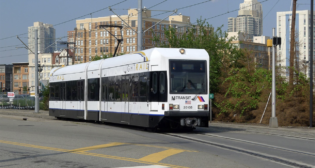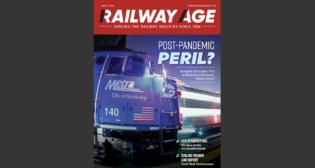
NJT touts safety initiatives
Written by William C. Vantuono, Editor-in-Chief
On Sept. 21, the same day the National Transportation Safety Board opened the docket on New Jersey Transit’s Sept. 29, 2016 Hoboken Terminal crash to the public, NJT announced it “has implemented a variety of rail safety upgrades over the past year and is looking at additional enhancements for the future, as part of its commitment to safety.”
NJT Rail Operations is currently replacing all the old (and by some accounts weakened) stub-end-track steel bumpers at Hoboken Terminal with new sliding friction bumper blocks as well as installing a speed control system for trains approaching platform ends at Hoboken Terminal. NJT describes this as “a system so arranged that its operation will automatically result in a full service application of the train brakes if the speed of the train exceeds the predetermined rate. The application will continue until the train is either brought to a stop or, under the control of the engineer, its speed is reduced to the predetermined rate.”
Other initiatives this past year include enhanced sleep apnea screening and testing, adding additional personnel to the head end of trains entering certain stations, and reducing speed limits.
NJT reports that, over the course of the past year, it has implemented the following safety initiatives:
• In October 2016, implemented an interim measure where any safety-sensitive rail employee who exhibits any indication of potential fatigue symptoms is immediately removed from service until they obtain the appropriate documentation attesting to the satisfactory results or the condition is not present. This initiative was formalized as policy in April 2017. • To date, 350 of 370 engineers and nearly 33% of more than 1,000 conductors have been screened for sleep apnea. By the end of September, all locomotive engineers will be screened for sleep apnea.
• Advanced the installation of forward- and inward-facing cameras on trains. To date, nearly 84% of trains now have forward-facing cameras and more than 73% of the rail fleet has inward-facing cameras, which are focused on the engineer’s actions. NJT expects to have both types of cameras installed in the entire fleet by year’s end.
• Implemented a new initiative that requires the conductor to ride in the head end of trains, along with the engineer, when entering terminal tracks at Hoboken, Penn Station New York, Atlantic City, Princeton, Gladstone and the Meadowlands Rail Station. Speed limits entering Hoboken, Atlantic City, Princeton and the Meadowlands have been reduced from 10 mph to 5 mph as a proactive measure.
• Increased the penalty for cell phone infractions, now up to a 90-day suspension for a first-time violation.
• The Office of System Safety (OSS) continues to hire and backfill key safety positions including a Deputy Chief Safety Officer, Industrial Hygienist, Environmental Safety Specialist and Safety Education Program Specialist.
• OSS conducted 16 safety blitzes at key grade crossings and stations to educate and reinforce rail safety to customers and the public.
• This past year, the NJT Police Department worked with several federal, state and local law enforcement agencies and emergency responders, providing emergency response training for 750 first responders, and rail safety training for an additional 550 first responders.
“As we approach the one-year anniversary of the tragic incident at Hoboken Terminal, and while the cause has not been identified, NJ Transit continues taking immediate actions to better protect our customers, our employees and the public,” said Executive Director Steve Santoro. “The steps we’ve taken so far are moving us in the right direction, and we continually raise the bar higher each and every day. Safety is a demand [upon which] I will not compromise or negotiate.”



